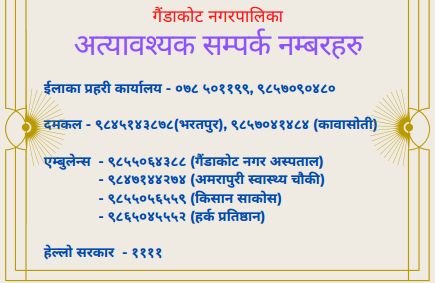कोविड १९
गैंडाकोट नगर क्षेत्रभित्र निर्माणधिन भवनहरुमा प्रयोग भएको कंक्रिटको मुल्याँकन
In-situ compressive strength assessment of concrete in under-construction residential buildings at Gaindakot municipality
© Er. Raju Aryal, Dr. Anjay Kumar Mishra.
Abstract: Concrete is the most used construction material in modern era. A general evaluation about concrete’squality can be obtained by determining its compressive strength. In Nepal a few research have been car-ried out to ensure the in-situ quality of concrete. The objective of this study was to access the compres-sive strength of concrete produced at site, their ingredient’s proportion and compare if they comply withNBC of Nepal. 90 cubical specimens from 30 houses in 10 wards at Gaindakot Municipality were collectedpurposively and tested for compressive strength value along with the proportion of cement, sand, aggre-gate and water.After analyzing cubes from 30 houses, the mean compressive strength was found to be23.928 N/mm2.Similarly80% of houses constructed at site prepared and placed concrete having compressive strengthvalue more than 20 N/mm2, complying NBC of Nepal. ANOVA analysis showed that there was no signif-icant difference in compressive strength means among houses of 10 wards but there was higher standarddeviation and wider range within houses of same wards. 73.33% of sampled houses produced concretemaintaining water-cement ratio of 0.4 to 0.6 but no consistency in use of sand and aggregates revealinginconsistent and uncontrolled concrete production process. Control chart showed that more than 15% ofmeasured compressive strength of concrete lied outside the control limit point.Ó2020 Elsevier Ltd. All rights reserved.Selection and peer-review under responsibility of the scientific committee of the Emerging Trends inMaterials Science, Technology and Engineering.
